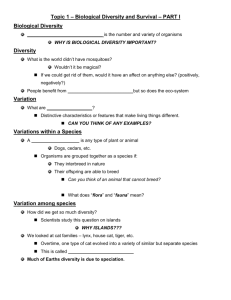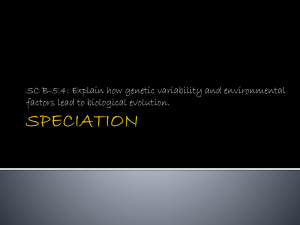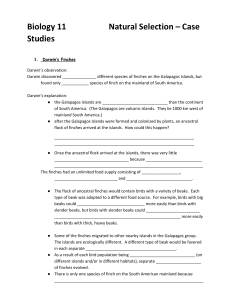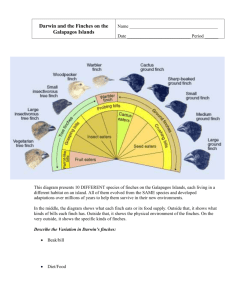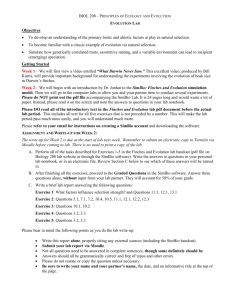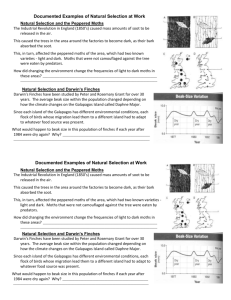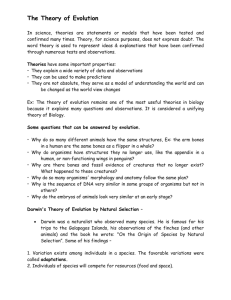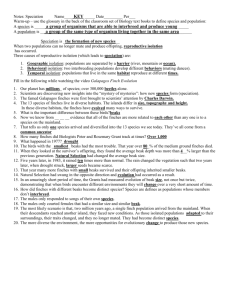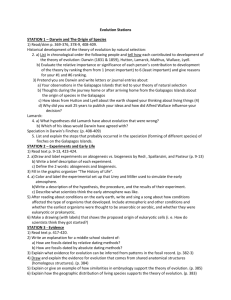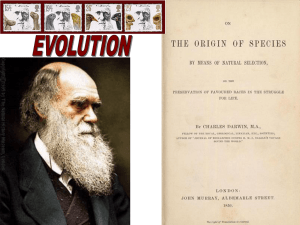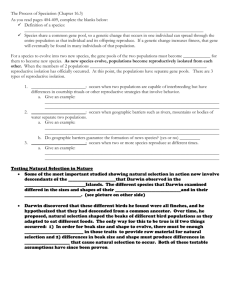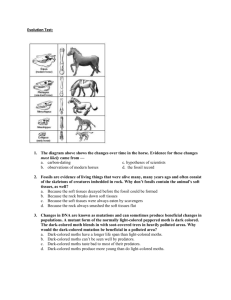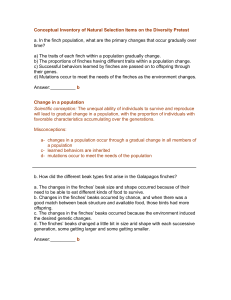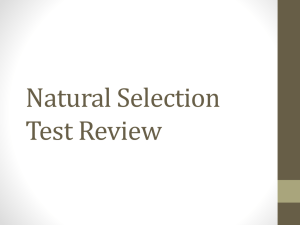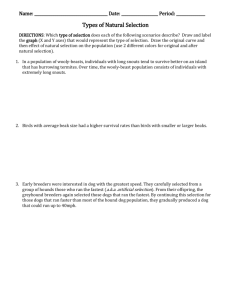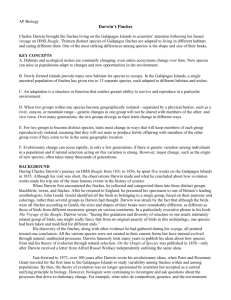E-assessment task Science
advertisement
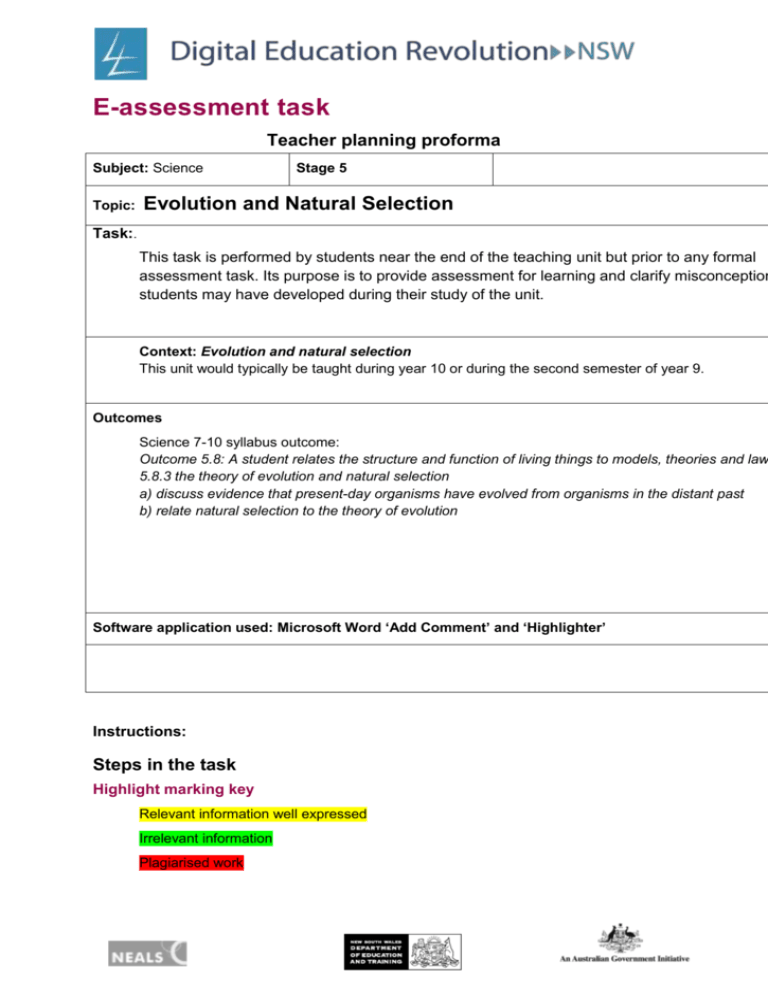
E-assessment task Teacher planning proforma Subject: Science Topic: Stage 5 Evolution and Natural Selection Task:. This task is performed by students near the end of the teaching unit but prior to any formal assessment task. Its purpose is to provide assessment for learning and clarify misconception students may have developed during their study of the unit. Context: Evolution and natural selection This unit would typically be taught during year 10 or during the second semester of year 9. Outcomes Science 7-10 syllabus outcome: Outcome 5.8: A student relates the structure and function of living things to models, theories and law 5.8.3 the theory of evolution and natural selection a) discuss evidence that present-day organisms have evolved from organisms in the distant past b) relate natural selection to the theory of evolution Software application used: Microsoft Word ‘Add Comment’ and ‘Highlighter’ Instructions: Steps in the task Highlight marking key Relevant information well expressed Irrelevant information Plagiarised work Task This is an in class task to assess your learning and understanding of the theory of evolution by the process of natural selection. You have 25 minutes to complete this task. Respond to each of the following questions or statements. 1. Much of the material learned in science is described as a model, theory or law. The theory of evolution by the process of natural selection is such a case. Describe the features that identify when an idea is expressed as a theory rather than a model or law. If appropriate use the theory of evolution by natural selection to support your response. 2. Identify three pieces of evidence that support the theory of evolution by natural selection and describe how each piece of evidence supports the theory. 3. One of the keystone observations supporting the validity of the theory of evolution by natural selection was the diversity of species of finches on the Galapagos Islands. Describe the proposed mechanism by which evolution occurred that led to this species diversity. Marking criteria Marked loosely using a SOLO criteria. No marks awarded as this task is an assessment for learning task. Question Unistructural 1. Models, theories and laws Defines a model, a theory, a law 2. Support for evolution by natural selection Identifies one, two or three valid pieces of support. 3. Galapagos finches Identifies that there is a diverse range of separate species of finches that evolved from a common ancestor species Multistructural Relational Identifies the differences between the levels of support required for a model, theory, law Weakly links one, two or three valid pieces of support directly to natural selection as a mechanism for evolution. Recognises and describes the mechanism for evolution by natural selection Links the level of data and observation support for the theory of evolution by natural selection to the concept of a theory Clearly links one, two or three valid pieces of support directly to natural selection as a mechanism for evolution Recognises and describes the mechanism for evolution by natural selection and describes how this could reasonably be inferred to have led to speciation of finches on the Galapagos Islands. Assessment for learning task Evolution by natural selection Students are to submit their response in as a Microsoft Word 2007 .doc Student feedback will be given using a range of review features of the Microsoft Word 2007 program; call outs, comments and a highlight key. Highlight key – selected from the Home tab as the ab with highlighter toggle. Callouts – left click on the Insert tab, left click on shapes, select a callout shape from the drop down menu. It may help to change the transparency level of the call out to enable text below to be seen through. Comments – selected from the Review tab then insert New Comment. Student Response You need to say what a model, theory or law is and then describe why evolution is a theory referring to your definition. It is a theory because it is a complex principle based on observation. Laws apply to the more ‘pure sciences’, and are more fundamental to the natural world. 1. - In certain species of spiny leaf insects, females can reproduce asexually, leading to a decline in numbers of males. This is an example of natural selection changing a species. – During the early times of the industrial revolution in Britain, there was a change in dominance from white moths to black moths, presumably because black moths were better camouflaged in the smog. The black moths were less likely to have been eaten by predators in the smog and so survived to reproduce, eventually outnumbering the white moths. - During the early stages of foetal development, mammalian embryos all appear similar, regardless of species. This suggests that the different species are homologous. 2. Each island in the Galapagos Islands has a slightly different environment, with different food sources. In the beginning, there would have been variation in each population. The finches more adapted to their specific islands would have survived to reproduce, whereas the maladapted finches wouldn’t have. Over many generations, the each population of finches would have been sufficiently different to have been classed as separate species. How does this relate to changing the characteristics of a population that leads to the creation of a new species? Is it passing on their favourable characteristics to their offspring. Clarifying this is a very important connection that shows you understand the process.
